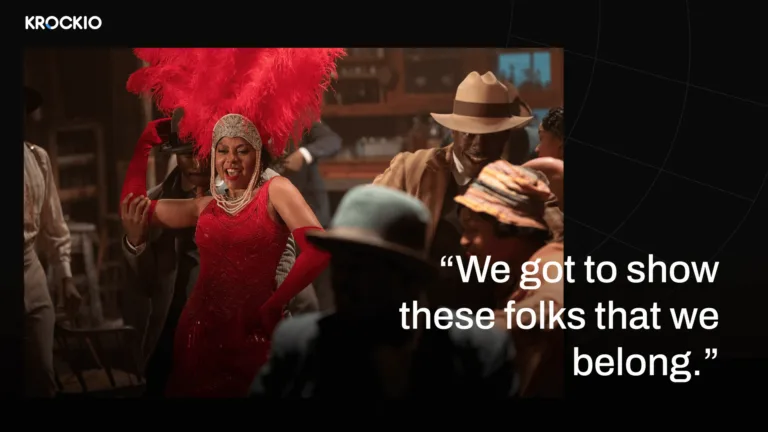The process of composing a format of a screenplay is extremely rewarding, but it can also be challenging. A good screenplay takes a lot of work, and if you wish to sell it, it’s just the beginning. A script must be polished through several drafts, hire an agent, be sent to studios and producers, and someone must like it enough to risk a substantial sum of money to spend it. Whether it will be produced and financed is up to you.
For the first time, writing a movie script may leave you perplexed as to what a script is. A script is just an idea that comes into your head. You can also create a script based on a true story, or something written by a famous author — like a novel, newspaper article, theater play, etc.
Film manuscripts outline all the parts needed to tell a story in a movie or on TV, including, audio, visual effects, behavior, and dialogs. These are not only prepared for screenplays but also 60-second short videos promoting any business. While creating and writing your screenplay, you will need to follow the below steps.
A Step by Step Guide to How to Write Movies
Start reading some film manuscripts and scriptwriting books
After reading as many great scripts as you can, you’ll realize that this is the first step toward stellar scripts. Like, if you write a comedy play, start by searching for “50 best comedy scripts”. Many scripts are freely available online.
To make a craft of film manuscript writing, read the related books that will be helpful to link your mind with different tones. Here is a list of some movie script examples below before you get started:
- Your Screenplay Sucks! — William M. Akers
- The Coffee Break Screenwriter — Pilar Alessandra
- The Nutshell Technique — Jill Chamberlain
- The Art of Dramatic Writing — Lajos Egri
- Screenplay — Syd Field
- The Sequence Approach — Paul Joseph Gulino
- Writing Screenplays That Sell — Michael Hague
- Story — Robert McKee
- My Story Can Beat Up Your Story — Jeffrey Alan Schechter
- Making a Good Script Great — Linda Seger
- The Writer’s Journey — Christopher Vogler
Watch your favorite films
You can get into the scriptwriting zone easily by watching your favorite films again and reflecting on what you have in common with them. Jot down why certain scenes or lines of dialog appeal to you. Try to figure out why this particular character attracts you. Look up some ‘best movies of all time lists instead if you’re having trouble picking out movies to watch.

Prepare your logline
The first thing you should do is write the logline for your episode. This is an overview of your story in a single sentence or paragraph, that describes the protagonist (hero) and the antagonist (villain) and the conflict they face. A logline should outline the central idea of your story and its overall theme. The clip provides an opportunity to explain what the story and style are about, and how it makes the viewer feel.
Your logline once appeared on the spine of your script, as it used to be in the older days. It is created for producers so that they quickly look at it and decide whether to read the entire writing or not. As of today, loglines serve the same purpose, although most often verbally, or add details with treatments.
Write a story treatment
When you’ve got your logline down, time to write the treatment. This script writing format features the title of your script, the logline, main characters, and a short synopsis. Producers might read a treatment before deciding whether to invest time in reading your entire writing – it might convince them. Make sure to include your name and contact information in the treatment.
In your synopsis, be sure to highlight the major events (beats) of your story. Include your characters, as well as a general description of the world and character arc. Anyone who reads it (hopefully a hotshot producer) should become emotionally attached to your characters, eager to see how their story unfolds.
The goal of this step is to get a feel for how your story reads once you have written it down. Before you start writing the finer details of each scene, you will likely see some parts that are working and need to be tweaked.
Crave out your characters
Start probing your mind to write a movie character’s profile worksheet is a helpful way of its development. You can even get various characters for free online. Whatever characters you design in your head, the main thing that matters is your audience can get emotionally attached to them. Even if it is a Villain!

Create your plot
Your story should by now be pretty clear in your head. The next step is to break the story down into small pieces and create a ‘beat sheet’, which describes all the incidents that contribute to the development of the plot. This can be done in many ways, like, using flashcards or a notebook. Various digital tools are also available, such as Trello, Google Docs, Notion, etc.
Making use of whatever tool you have, doesn’t matter at all. It is important to break up the plot into scenes, then add extra details to each, such as plot beats and information about particular characters or plot points.
It’s tempting to get straight to writing the script, but it’s important to do some research and sketch out the plot first. Keep in mind that story is driven by tension — creating and then releasing it. The tension describes the plotting of the sequel that features the hero’s victory over conflict.
Make your first page of a draft
To prepare your first draft of your script, you should know how to do the basics. Simply put, your script writing format should be a printed document in which:
- 90-120 pages in length
- using 12-point Courier font
- Paper size: “8 1/2” x “11”, white, three-hole punched
The format of Screenplays typically has between 90 and 120 pages, though the number may differ according to the genre. In general, a comedy is 90 pages / 1.5 hours long, while a drama can be 120 pages / 2 hours long.
Usually, Screenwriters use their own language. The following terms will help you understand how the first page of the scriptwriting format should be:
- Scene heading: It is also referred to as a slug line, the information on the top of each new scene: “EXT.” or “INT.” (abbreviations for ‘exterior’ and ‘interior’), the location, and the time. To give an example: “INT. ABANDONED WAREHOUSE — NIGHT”
- Action line: A character’s actions in a scene are described by an action line.
- Parenthetical: This is a small instruction added before a character’s line that tells the reader how to deliver it.
- Transition: You begin your script with “FADE IN”. The end comes with “FADE OUT”. Throughout your script, you may use other transitions, such as “DISSOLVE TO” or “MATCH CUT TO”.
- Voiceover: Also known as “V.O.”. Voiceover is the narration that occurs when there is no visible narrator.
- Camera angle: Though typically ignored by screenwriters, camera angles are important in helping to deliver a joke or deliver a big reveal in a scene.

Choose your Digital software
There have never been more affordable Script Writing Software options available than before, which can make the task of writing a hit film a lot easier. So you can get down to telling a great story, these programs handle the script formatting (margins, spacing, etc.) for you. Check out the following:
- Celtx
- Fade In
- Final Draft
- Highland
- Movie Magic Screenwriter
There is a good deal of screenwriting software offering a plethora of outlining and development tools as well. They will help you to gather your ideas and thoughts before putting pen to paper. Take a look at the following:
- Contour
- Dramatica
- Save the Cat!
Craft your plan
Setting a deadline is always a good idea when you decide to undertake a big project. This lets you know when you must complete your task. It will take you about 8-12 weeks for writing a film manuscript — that’s how long industry writers usually have to work on them. Put the deadline in someplace you’ll be reminded of it: on your calendar, phone, or hand. Tell your friends about your goals and ask them to hold you accountable in order to motivate you.
When you are writing the first draft, the purpose is to get the words on the page. Just write whatever comes to your mind, and follow your script writing format for screenplays. Cranking out 1-2 pages per day can be easy enough to finish your first task within two or three months. Super-Easy technique!
Writing every day at the same time is beneficial for some people. Many people begin their day with writing. Some folks write at night. Some people write it according to their will. Many people find it easier to concentrate on their work if they turn off their phones and the Internet. Stick to your routine (or lack thereof) as it works for you. Don’t give up.
Read dialogs aloud
It’s always a good idea to read your dialogue aloud to know if it sounds right. As you write your dialog, speak it out loud. A few tweaks are required if it doesn’t flow smoothly or feels stilted. You can come back to them later when you are editing by highlighting the phrases you need to work on.
Have a short enjoyable break
After your draft is done, you may think that it’s the greatest thing ever written — or you may be sure that it’s pure nonsense. The truth probably lies somewhere in between. A creative project can be so deep that it’s hard to see the forest for the trees. It is therefore important that you take a break between writing and editing.
Start making some notes
You should read through your script after taking a good break and take note of any parts that seem to make no sense. Does the story seem confusing at any point? Are the characters doing bizarre things? Look for those sections, and highlight them with your red pen liberally. You might want to try reading the script out loud at this point — add accents and perform lines according to your vision of the story.
Get a valuable feedback
Whenever you finish a draft of your script, you may want to share it with others for feedback. It’s good to reach out to friends and family members first, or friends who are writers.
Create and wrap up your finalized draft
As soon as you’re done taking notes and gathering feedback, you can dive back into the weeds and polish your final draft. Make edits until you’re satisfied. If changes to the story or characters need to be made, make them first, as they can solve larger problems in the script.
New drafts should be created in new documents, so you’ll be able to integrate parts from your old scripts into your current ones. Get into some major details, but don’t stick with minor ones that you can’t finalize the film manuscript. Also, check your spelling and grammatical errors with the help of the most beneficial tool, Grammarly, before sharing it with anyone.
Doesn’t matter whether you write the script for a movie, a 60-sec short video of a brand, or a drama. This article covers it all, So start writing now!
Check out more articles on getting started with Krock:
- Feature to leave visual comments
- Top tools for remote design teams in 2022
- How to Create Effective Explainer Videos
- How Krock.io Can Streamline Video Production Process
- Choose the Best Creative Project Management Software
If you’re having any trouble or need any help, let us know.









